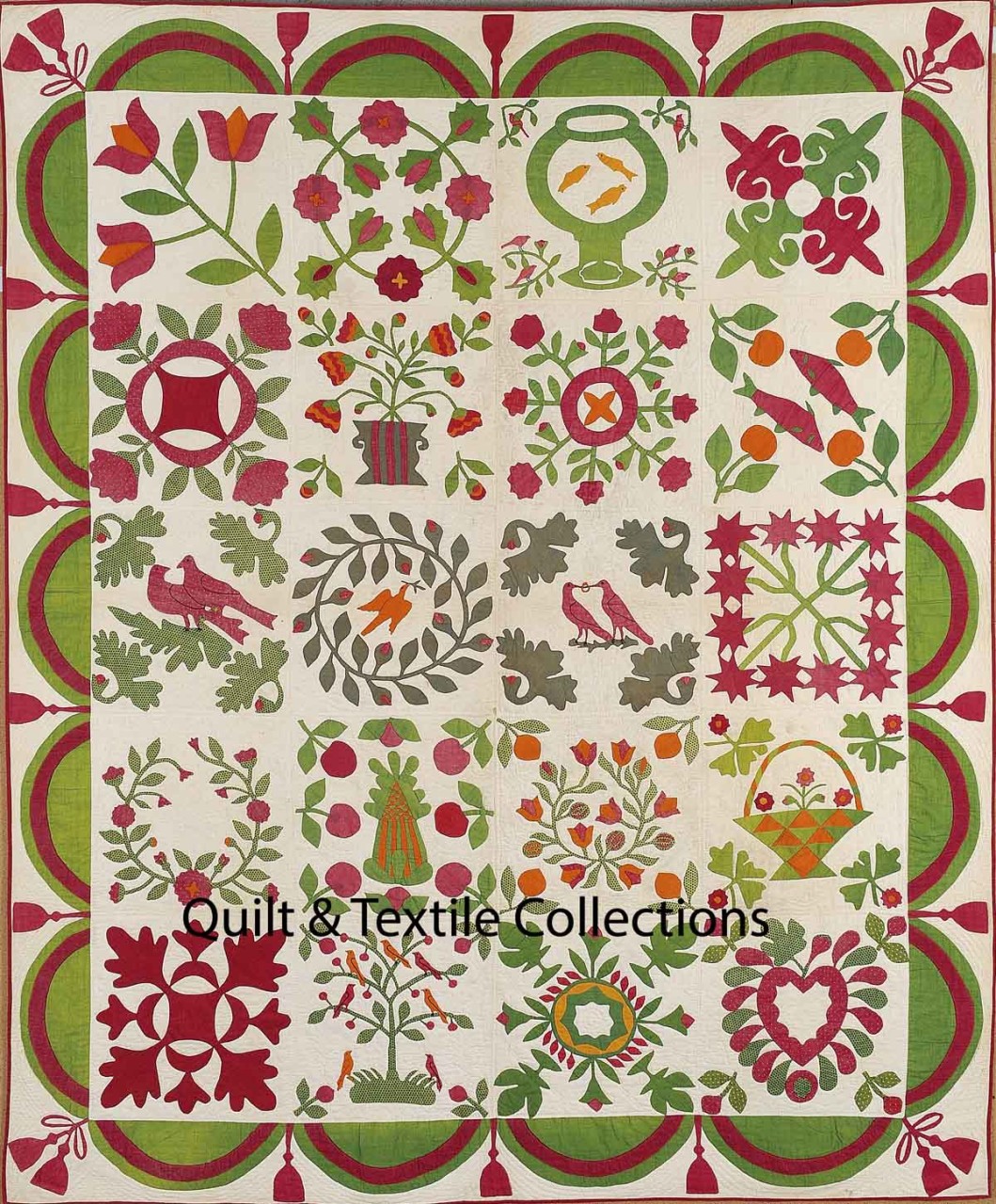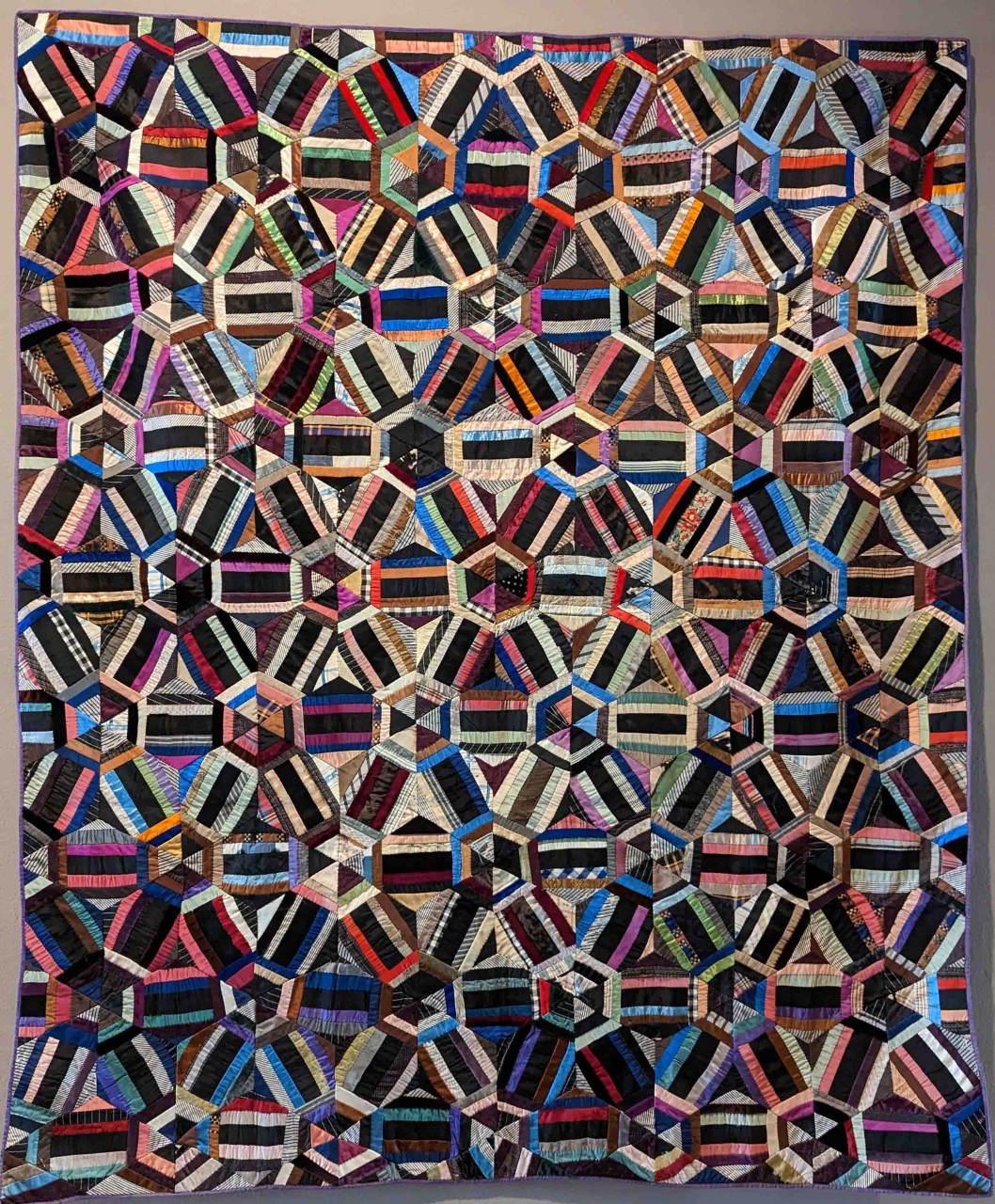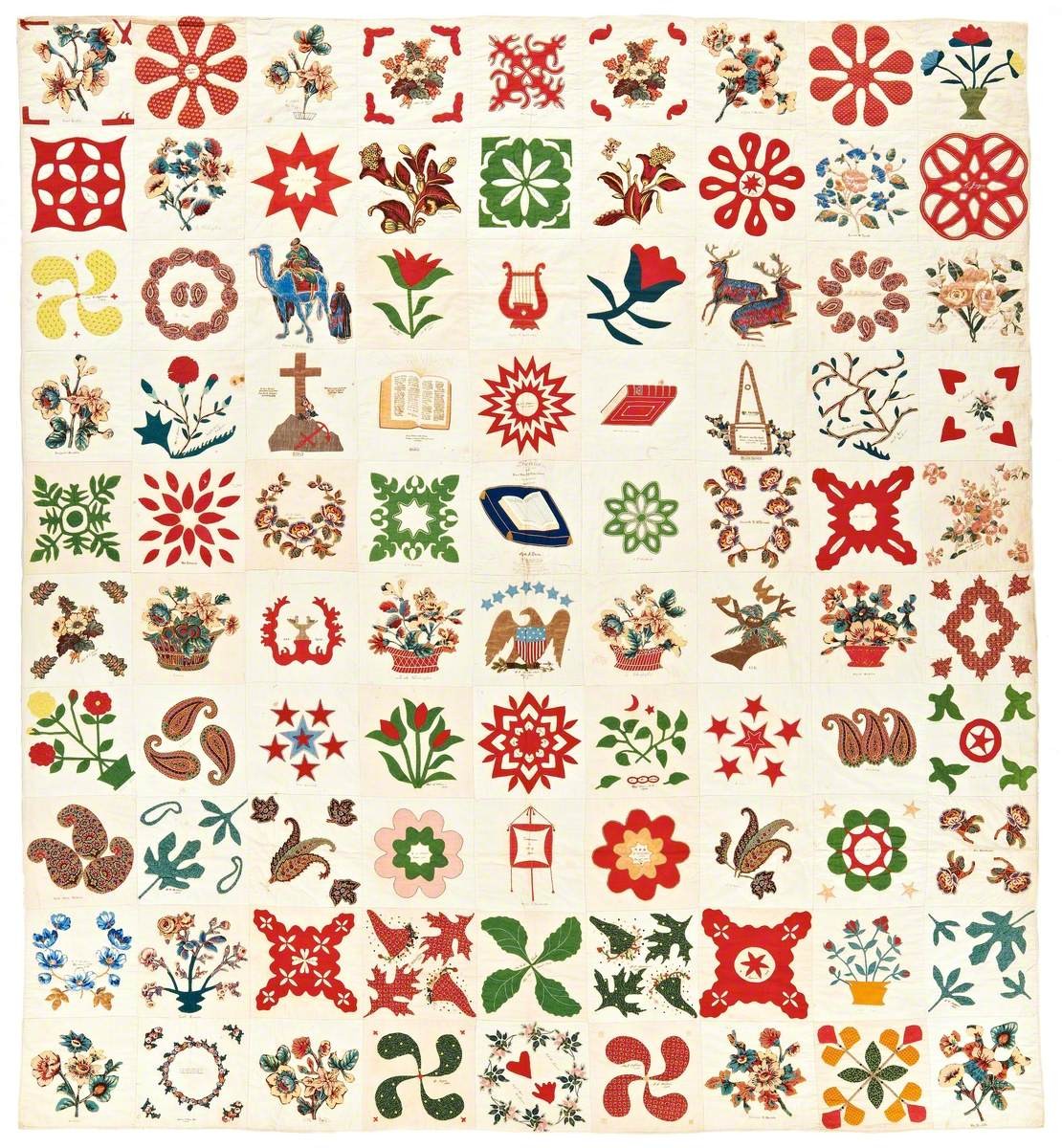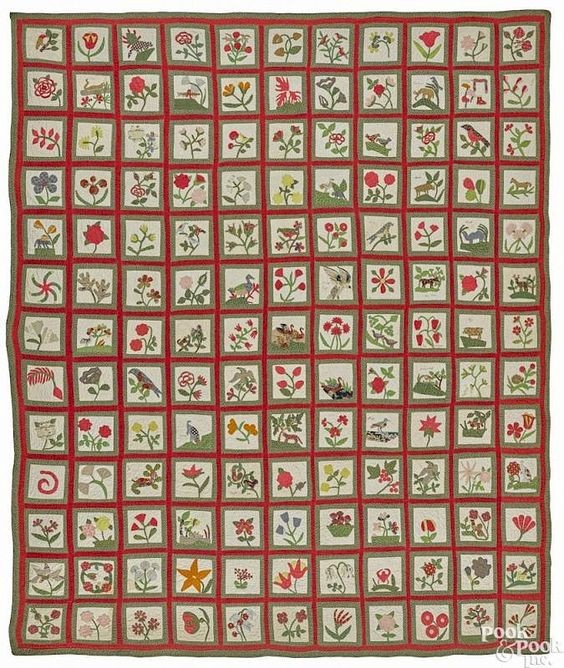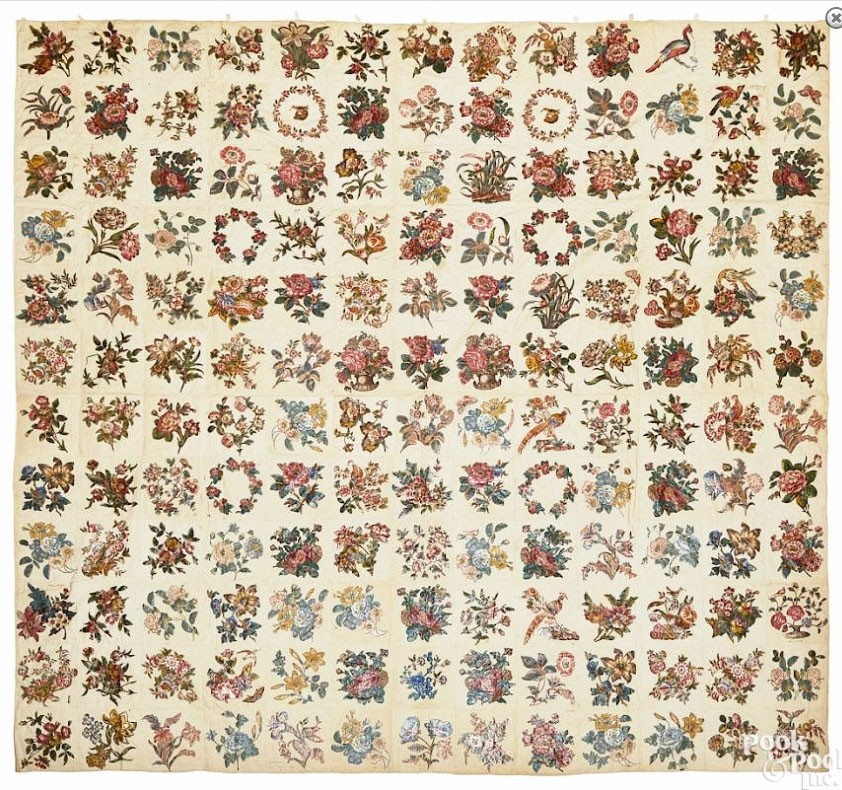
As some of you may recall, I’ve been researching whether there is a regional style of chintz applique. (If you want to re-read the previous blogs, here are the links to the first, second, third, and fourth blog.) After more research, I identified 20 quilts in the style, although the whereabouts are not always known. To see these quilts, please check out our Pinterest page at this link. Wherever possible we’ve included documentation about the quilt, but a few quilts in private collections are not included. Because of some written records, we know there are still additional quilts in this style out there. So, if you know about one of these quilts, please send me the information! We also identified more than 10 mixed album quilts which fit into this grouping by both style (chintz applique...


